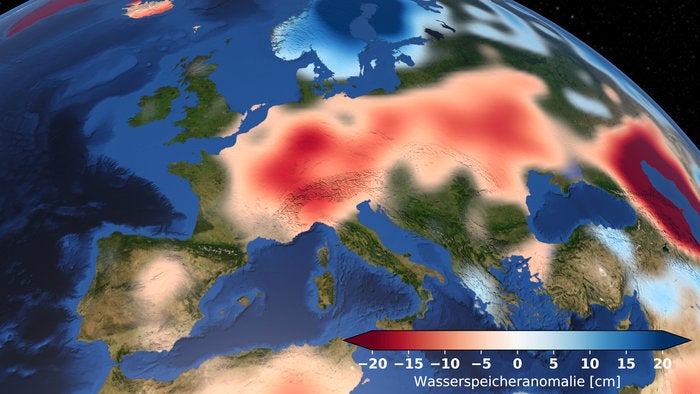Europe on the verge of water catastrophe as groundwater reserves dry up, scientists warn
The effects of this prolonged drought were evident in Europe during the summer of 2022

Your support helps us to tell the story
From reproductive rights to climate change to Big Tech, The Independent is on the ground when the story is developing. Whether it's investigating the financials of Elon Musk's pro-Trump PAC or producing our latest documentary, 'The A Word', which shines a light on the American women fighting for reproductive rights, we know how important it is to parse out the facts from the messaging.
At such a critical moment in US history, we need reporters on the ground. Your donation allows us to keep sending journalists to speak to both sides of the story.
The Independent is trusted by Americans across the entire political spectrum. And unlike many other quality news outlets, we choose not to lock Americans out of our reporting and analysis with paywalls. We believe quality journalism should be available to everyone, paid for by those who can afford it.
Your support makes all the difference.Europe is on the verge of a catastrophe as groundwater reserves dry up, scientists have warned.
During the summer months of 2018 and 2019, there was a severe water shortage in Central Europe.
Since then, there has been no significant rise in groundwater levels, which have remained constantly low.
The severe drought is damaging natural habitats, affecting agriculture and creating major energy shortages, a new study reveals.
The effects of this prolonged drought were evident in Europe during the summer of 2022.
Dry riverbeds and the slow disappearance of stagnant waters severely impacted both nature and people.
Numerous aquatic species lost their habitats, while dry soil caused many problems for agriculture.
The energy shortage in Europe also worsened as a result. Without sufficient amounts of cooling water, nuclear power plants in France struggled to generate enough electricity.
Hydroelectric power plants also struggled to fulfil their function due to the lack of water.

To gather their data, the team used satellite gravimetry to observe the world’s groundwater resources and document changes seen over several years.
They used twin satellites that orbit the Earth in a polar orbit at an altitude of just under 490km.
They provide readings of the total mass, from which the changes in the rivers and lakes are then subtracted. Soil moisture, snow and ice are also subtracted and then finally only the groundwater remains.
The distance between the satellites of around 200km was crucial to the project.
The one behind could not catch up with the one in front, leading them to be aptly named Tom and Jerry.
The distance between the satellites was constantly and precisely measured.
If they flew over a mountain, the satellite in front was initially faster than the one behind because of the increased mass under it.
Once it had passed the mountain, it slowed down slightly again, but the rear satellite accelerated as soon as it reached the mountain.
Once both were over the top, their relative speed was established once more.
These changes in distance over large masses were the main measurement factors for determining the Earth’s gravitational field and they were measured with micrometre precision.
As a comparison, a hair is about 50 micrometres thick.
These satellites speed around the earth at around 30,000 km/hr, orbiting the Earth 15 times a day.
They can cover the entire Earth’s surface after just one month, meaning they can provide a gravity map of the Earth each month.
Dr Torsten Mayer-Gürr, a professor at Graz University of Technology, Austria, and study author, said: “The processing and the computational effort here are quite large.
“We have a distance measurement every five seconds and thus about half a million measurements per month. From this, we then determine gravity field maps.”
However, these gravity maps cannot show the exact amount of groundwater on the planet, as the satellites do not distinguish between sea, lakes or groundwater.
To work out separate masses for each body of water, other partners in the EU G3P project had to help out.
While Tom and Jerry provided the total mass, the changes in mass of the rivers, lakes, soil moisture, snow and ice were subtracted, leaving only the level of groundwater.
The result of this cooperation shows that the water situation in Europe has now become very precarious.
Dr Mayer-Gürr said: “A few years ago, I would never have imagined that water would be a problem here in Europe, especially in Germany or Austria.
“We are actually getting problems with the water supply here – we have to think about this.”
The study was published in the journal Geophysical Research Letters.



Join our commenting forum
Join thought-provoking conversations, follow other Independent readers and see their replies
Comments